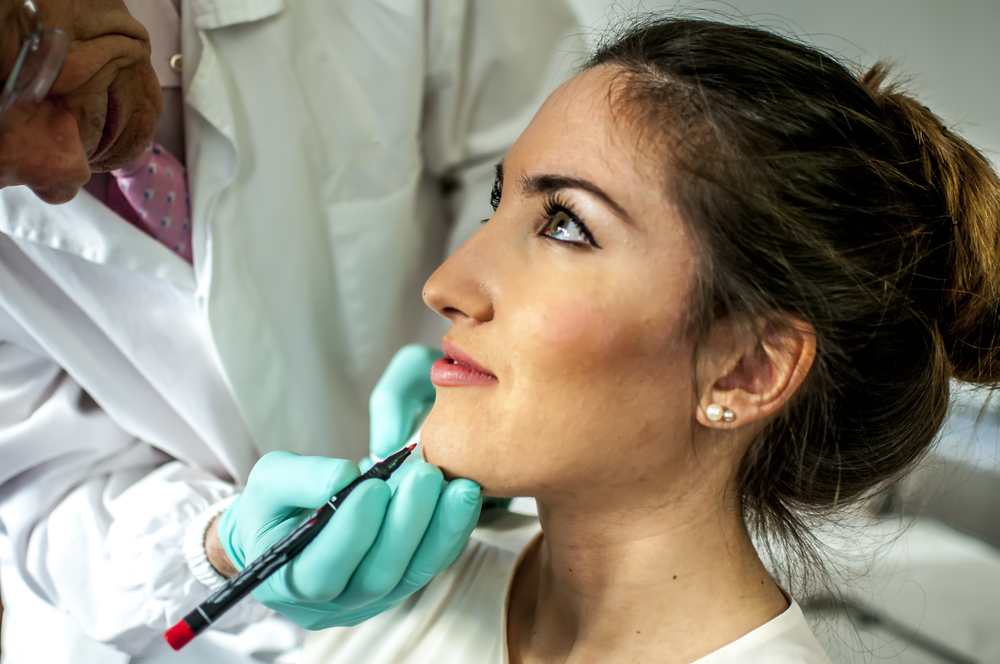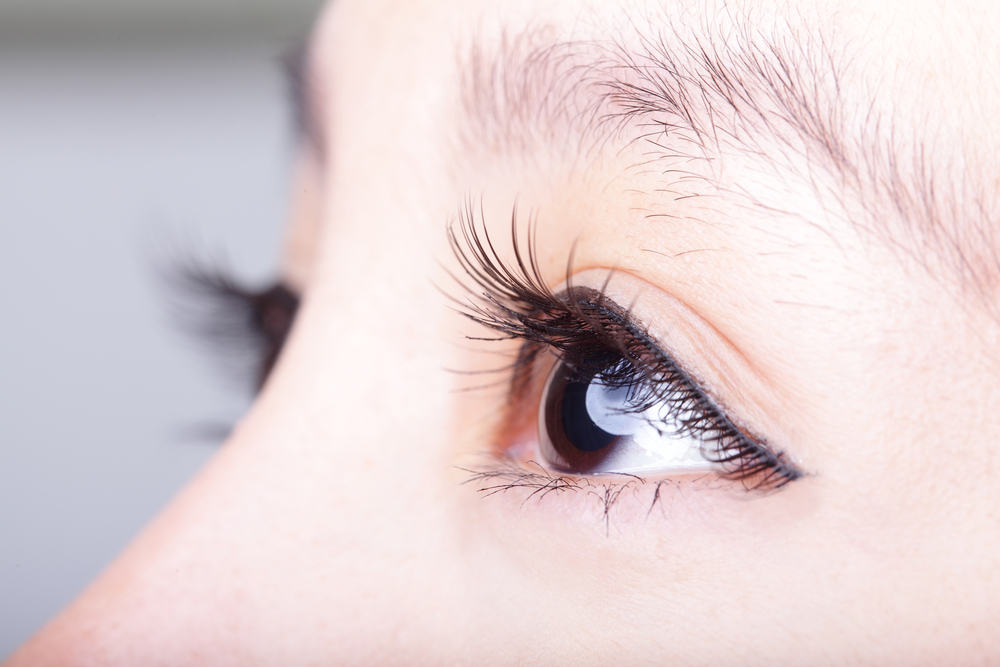Facial bone contouring offers patients the opportunity to achieve a more proportionate face and jawline through a wide range of permanent surgical procedures.
What Is Facial Bone Contouring?
One of the most fascinating aspects of beauty is that it is not fixed, but fluid. Ideals of beauty have changed dramatically throughout human history, and cultural standards of beauty are relative and still vary widely nowadays.
Among women of Asiatic origin, a delicate and feminine facial shape is prized. However, genetics dictate that many Asian women are born with elongated or square jawlines, or slightly protruding cheeks or mouth, which compromise the desired feminine facial aesthetic.
As a result, facial bone contouring surgery has evolved to offer Asian patients the opportunity to achieve the features they desire by permanently addressing the following issues:
- Square jaw
- Weak chin
- Protruding chin or jaw
- Protruding mouth
- Protruding or flaring cheeks
- Asymmetrical mouth
Your surgeon can make a recommendation of the contouring procedures that would give you the greatest benefits, based on your needs and wishes, his or her technical preferences and your facial anatomy.
Benefits of Face Contouring Surgery
Both women and men who undergo this surgical procedure report a range of benefits:
- Enhanced confidence
- Increased self-esteem
- A more balanced face
- More feminine jawline
- Reduced cheek protrusion
- A more symmetrical facial appearance
- Reduced jaw/mouth protrusion
- Well-defined jaw line
- A more feminized facial appearance (for women)
- Shorter downtime than other facial cosmetic procedures
Ideal Candidates
If you feel troubled by one or more of the following issues, you could benefit from facial contouring surgery.
- You have an elongated, square, or overly pronounced chin
- You have cheeks that protrude excessively
- You have a chin or mouth that protrudes, and would like to reduce the angle of the protrusion
- Your jawline is asymmetrical
- You have a weak chin that would benefit from augmentation
- You would like to reduce the width of the lower part of your face
- You would like to reduce width across your midface
An ideal candidate for Asian facial contouring surgery should also:
- Be in a good state of physical and mental health
- Have reasonable expectations regarding what surgery can and cannot achieve
- Be informed about the procedures involved
- Be cognizant of any risks or complications that may occur
If you suffer from serious health problems such as diabetes, high blood pressure, bleeding disorders, heart disease, depression or obesity, these conditions may hinder your ability to successfully recover from surgery. Seek advice from your surgeon if you are affected by any of the above.
Finding a Surgeon
Asian facial contouring surgery involves a specialized series of reduction surgery procedures which generally involve some form of osteotomy (bone cutting and reshaping). Reduction malarplasty (reduction of the cheekbones), jaw reduction and mandibular angleplasty (reduction of the projection of the jawline) require recontouring of the bone.
To achieve optimal results, you should seek a surgeon who has experience performing the specific facial contouring procedures you are considering. Finding the right surgeon with the appropriate expertise and with whom you feel comfortable is the first and most critical step to ensuring you enjoy a beautiful postoperative outcome.
Here are five key criteria to keep in mind when beginning your search for a surgeon:
1. Experience in the procedures you require
Different surgeons hold distinctive specializations within the field of plastic surgery. Rhinoplasty, which requires work on cartilage and bone, necessitates a different set of skills than a procedure like breast augmentation, which works on soft tissue.
Seek a surgeon who has a reputation or expertise in Asian facial contouring surgery, and ask prospective surgeons the following questions:
- Have you received training in the procedure(s) I am considering?
- How many years have you been performing this procedure?
- How often do you perform this procedure?
2. A professional yet friendly manner
You should feel completely comfortable in your surgeon’s presence. When first making contact with a prospective surgeon it is important to feel at ease to ask questions, even those of a sensitive nature, and be made aware of any risks or complications that may occur.
3. Board certification
Board certification is the most critical credential a surgeon can have. Board certification guarantees that you are in the hands of a consummate professional who regularly undergoes training, stays current in their field, and observes the highest standards of patient safety.
The most elevated form of board certification available for surgeons in the U.S. is the American Board of Plastic Surgery certification (ABPS).
4. Facility accreditation
The facility where your surgeon performs surgery is also of paramount importance. Ask any prospective surgeon where your surgery would be carried out and about the facility’s level of accreditation.
The safest and most equipped facilities hold AAAASF, AAAHC, or JCAHO accreditation.
5. An appealing sense of aesthetics
Before and after photos offer an incredibly accurate guide of a surgeon’s aesthetic sense, as well as the kind of results you can expect should they perform your facial contouring surgery. What one surgeon considers beautiful another may find unappealing.
You will find when you begin your search for a surgeon that the work of some surgeons is more appealing than others. Look at photos of patients who share characteristics or features similar to yours to gain an idea of the type of outcome you can realistically expect.
How Much Does Facial Contouring Surgery Cost?
The cost of facial contouring surgery can vary dramatically: between US $4,000 and US $30,000, depending on the extent of work required and the number of procedures you undergo.
Ask your surgeon for a comprehensive quote after your first consultation so you are cognizant of the financial investment required. As an elective cosmetic procedure, facial contouring is rarely covered by medical insurance.
Some costs that may also influence the final price of surgery include:
- The surgeon’s professional reputation — surgeons who are acclaimed for the quality of their aesthetic work may charge more.
- The geographical location of your surgeon — surgical clinics in more populated metropolitan centers generally charge more because of higher overheads.
- The type of facility the surgeon operates in — surgery that takes place in a hospital generally costs more than surgery performed in an ambulatory clinic or outpatient center.
Preparing for Surgery
Facial contouring surgery requires significant preparation and communication with your surgeon in order to achieve your objectives. Prior to surgery, your surgeon will spend time interviewing you and examining your facial bones and soft tissues to assess how to best achieve your aesthetic goals.
Preoperative planning for facial contouring surgery may require discussions with your surgeon about:
- Your expectations and desired outcome
- Medical conditions, drug allergies, previous medical or cosmetic surgeries or treatments
- Any current medications, vitamins or herbal supplements you are taking — some medications and herbal supplements can exacerbate bleeding thus you may need to desist from taking them
- Your facial anatomy and its soft tissue
- The best anesthesia option for you
Your surgeon may ask you to undergo:
- Blood tests to determine your physical health
- A full medical check up
- Facial x-rays or CT scans
In addition, it will be your responsibility to ensure you are in the best possible state of physical and mental health before surgery. This means:
- You must give up smoking at least 6 weeks prior to surgery, as smoking can detrimentally affect the healing process and cause necrosis or tissue death
- Eat well and nourish your body in the weeks leading up to surgery
- Minimize any stress in your life
- Get plenty of rest and exercise
- Reduce your alcohol intake
- Prepare yourself for postoperative recovery: have healthy snacks on hand, ensure you have a support person to help you in the first few days after surgery, fulfil any prescriptions for pain relief and take at least a few weeks of vacation from work.
The Day of Surgery
It’s natural to experience a mixture of nervousness and excitement on the day of your surgery. Arrange for a friend, partner or loved one to drive you to surgery and to collect you afterwards.
Your surgeon will also provide you with a list of special instructions to follow prior to surgery.
- Observe the preoperative fasting period specified by your surgeon to ensure you can safely go under general or local anesthesia.
- Remove any nail polish on your fingers, as colored polish can interfere with the readings of the pulse oximeter.
- Wear loose, comfortable clothing that is easy to remove and put on over bandages.
- Leave all valuables and jewelry at home.
- Shower on the morning of surgery: it will be several days or even longer before you can shower properly again.
- Ensure your skin is clean and free of any makeup, creams, lotions or deodorants.
Procedures and Surgical Techniques
The duration of your surgery will depend on the combination of procedures you undergo. Generally, most forms of Asian facial contouring surgery include malarplasty, jaw reduction or genioplasty as pivotal procedures.
These may be complemented by other procedures such as Asian rhinoplasty, blepharoplasty (eyelid surgery) or foreheadplasty for a complete facial transformation. If you are undergoing a range of procedures you surgeon may recommend staggering the surgeries to ensure optimal results and expedite the healing period.
Reduction Malarplasty
Reduction malarplasty — also known as zygoma reduction — involves the reshaping, reduction or repositioning of the cheek area or zygomatic arch. The procedure generally takes 1.5 to 2 hours. The surgeon accesses the area through intraoral (mouth), coronal (top of the head) or preauricular (in front of the ear) incisions.
Your surgeon will select the most appropriate incision method depending on your individual needs and facial anatomy. Several techniques that can employed to reduce and reshape the zygomatic arch.
- Zygomatic shaving reduces the prominence of the cheek protrusion and soften the angles of the malar complex via an intraoral incision.
- Burring reduces the size of the frontal aspect of the bone.
- Osteotomy cuts and dramatically modifies the zygomatic arch. The zygomatic arch is recontoured, re-inserted and repositioned in the cheek through a sliding method. This method requires good skin elasticity in the patient as sagging in the midface may occur due to the quantity of bone that is removed to reduce width across the midface.
Jaw Reduction Surgery
There are several variations of surgery available to reduce and reshape the mandible, and address a heavy or “square” jawline. Surgery generally takes between 1.5 to 2.5 hours, and the mandible is usually accessed via intraoral incisions.
Surgical approaches differ in the type of resection technique employed, and the anatomical aspect of the jaw that is targeted.
- Mandible bone shaving reduces the jaw’s prominence and projection. This procedure will generally remove 0.3-0.5cm from each side of the face for a more subtle and refined result.
- Mandible angle resection is performed by removing part of the mandible to slim down and feminize the face. An oscillating saw may be used to carry out the resection. The result is a moderate transformation of the lower third of the face, with 0.5 to 0.8cm of width removed from each side of the jaw.
- Mandible angle-splitting osteotomy is most suitable for patients with a moderate to pronounced square-shaped face. Angle-splitting osteotomy results in significant reduction of the jaw via removal of the outer cortex of the mandible. The masseter muscles of the jaw may also be reduced. Up to 1 cm of width is removed from each side of the face.
Genioplasty
Genioplasty surgically alters the profile of the chin through augmentation or reduction. If you have a strong jaw or square chin, the height of the chin will be reduced or rounded through osteotomy. If your chin is weak, the surgeon will supplement the existing shape with implants. Genioplasty may be performed to ensure the face is in proportion following other contouring procedures.
The operation is performed intraorally, so there are no visible scars on the face. A cut is made through the gum on the inside of the lower lip to gain access to the lower jaw bone and chin. A small saw is used to break the chin bone in a controlled manner and move it into its new position. It is held in place with metal plates and screws. The gum inside the mouth is sutured with dissolvable stitches.
V-Line Surgery
V-line surgery — also known as double jaw surgery — refers to a procedure which combines jaw reduction surgery and genioplasty. It is characterized by three steps: the reduction of the protrusion or angle of the jaw, the reduction of the size of the mandible bone and the masseter muscles, and the recontouring of the chin, resulting in a V-line jaw profile.
Recovery, Side Effects, and Results
Immediately following surgery you will be wheeled into a recovery area where you will be closely monitored by nurses until you awake from the anesthesia and are deemed ready to go home. Some patients may need to spend one or two nights in an aftercare facility, depending on the extent of the work they have undergone.
The recovery period varies in length for different patients. If you are in a sound state of physical and emotional health, it’s likely you will enjoy a swift recovery free of any serious complications. If you have had several procedures performed simultaneously, your recovery may take longer.
Your surgeon will provide you with a list of instructions to support you throughout the healing process which you must adhere to. Post-operative instructions generally cover the following points:
- Keep your head elevated when sleeping for 1-2 weeks
- Take prescribed medications as instructed, particularly antibiotics as they help to inhibit infection
- Use a cold compress on the incision areas to reduce swelling
- Keep the bandages around your head clean and dry
- If your surgeon has provided you with a support bandage or garment, ensure you use it for as long as directed as it will reduce swelling by applying gentle compression
- Use an antibacterial mouthwash or gargle regularly if you have oral incisions in order to keep the area clean, as the mouth can be prone to infection
- Consume a liquid diet for the first week after surgery, and a soft diet for the following 2-3 weeks with plenty of nutritious foods such as soft vegetables, soups, hummus, yogurts and pureed fruit
- Avoid strenuous physical activity or exercise for one month
- Move around gently as soon as you are able after surgery to encourage blood flow and circulation
- Keep any follow-up appointments with your surgeon so he or she can check on your progress and remove any drains that may be in place at the incision sites
You should expect to experience some of the following symptoms as natural side-effects of surgery. However, with proper rest and care they will subside relatively quickly.
- Swelling (cold compresses can help reduce swelling)
- Bruising
- Numbness
- Pain/discomfort (this can be treated with pain relief medication)
The results of facial contouring surgery are permanent. However, it may take between 6 and 9 months for swelling to subside and your face to settle into its new shape. You can maintain beautiful results by avoiding the sun or using high SPF sun protection, eating well and scheduling follow-up appointments if you have any queries or concerns.
Face Contouring Risks and Complications
Surgery requires that you adopt an informed attitude regarding any complications that may arise. Any form of invasive surgery carries some risk, although said risk can be mitigated by ensuring you place yourself under the care of a board-certified surgeon. Some of the more general complications that can occur as a result of cosmetic surgery include:
- Bleeding
- Hematoma (the abnormal collection of blood outside the blood vessels)
- Seroma (the collection of fluid under the skin close to the incision site)
- Infection
- Adverse reaction to anesthesia
- Swelling
- Bruising
- Numbness around the incision area or changes in the skin’s sensation
- Dissatisfaction with results
- Revision surgery
However, there are also more specific risks that accompany Asian facial contouring surgery. In rare cases, malarplasty has been linked to the following complications:
- Cheek asymmetry
- Cheek drooping
- Prolonged swelling
- Contour irregularity
- Pain or difficulty talking or smiling
Jaw reduction surgery can also cause the following complications:
- Asymmetry in the jawline
- Undercorrection of the mandibular angle
- Overcorrection of the mandibular angle
- Condyle fracture (fracture of one segment of the jaw bone)
- Facial nerve palsy resulting from trauma inflicted on facial nerves
- Trismus or lockjaw
- Contour irregularity
V-line surgery has been connected to the following risks:
- Difficulty chewing food
- Facial numbness
- Facial paralysis
- Misaligned teeth
- Inability to smile
- Nerve damage
The following risks may occur as a result of genioplasty:
- Bleeding inside the mouth as a result of the intraoral incisions
- Numbness in the lower lip which may take several months to disappear, although among a small percentage of patients it could last forever
- Infection caused by the plates and screws that hold the chin in its new position
- Adverse reaction to the chin implant
Latest Advances
Changing one’s bone structure for cosmetic reasons was unthinkable several decades ago, but recent innovations have not only rendered facial bone contouring surgery possible, but constantly subject to ongoing improvements. Cosmetic surgery in general has seen a shift towards increasing consumer desire for minimally invasive procedures, and this is also true of Asian facial contouring surgery.
One recent development outlined in the June 2017 Facial Bone Contouring Journal is indicative of this trend. The study’s author discusses a new approach to reduction malarplasty for the patient who desires reduction of the zygomatic area, but with a minimally invasive surgical approach.
The technique is called “mini-zygoma reduction surgery,” and is performed under local anesthesia through a temporal incision. Osteotomy is performed on the zygomatic body and arch, with the zygoma then inwardly repositioned and fixed in place with metal fixtures. The procedure boasts safe and reliable results, minimal complications and swelling, and a fast recovery period.
Frequently Asked Questions
What is V-line surgery?
V-line surgery was first developed in Korea for patients who wanted to change their jawline from a heavy-set square shape to a V-shape. It is a procedure which encompasses reduction of the angle or protrusion of the jaw, reduction of the jaw itself and contouring of the chin.
V-line surgery is popular in Asian facial contouring surgery, but is suitable for individuals of any ethnicity who would like a more feminized facial shape and chin.
What procedures are common in Asian facial contouring surgery?
One of the most attractive aspects of Asian facial contouring surgery is that it encompasses a range of procedures that can be combined to re-contour the face. In general, most Asian facial contouring engages some form of reduction of the zygoma or cheekbone, balanced by reduction of the jawline and masseter muscles to soften the facial profile.
However, surgery may also include blepharoplasty or eyelid surgery, rhinoplasty, chin implants or chin reduction, foreheadplasty and cosmetic work to correct facial asymmetry. You and your surgeon can decide on the perfect combination of treatments for you to achieve your aesthetic goals.
Is Asian facial contouring suitable for patients of other ethnicities?
Asian facial contouring surgery is not ethnically exclusive. Rather, it refers to procedures that address characteristics or features that tend to be common among Asian women. If you have a heavy-set or square jaw and overly prominent cheekbones then it’s possible that you could also benefit from Asian facial contouring procedures.
What are some of the risks or complications that may arise from Asian facial contouring surgeries?
Each procedural type is aligned with distinctive specific risks.
Reduction malarplasty in some cases can result in difficulty smiling or chewing, asymmetry of the cheeks or cheeks that appear to be drooping; jaw reduction surgery can cause lockjaw, fracture of the jawbone or facial asymmetry; genioplasty has been linked to bleeding, infection and numbness of the lower lip, and V-line surgery can cause facial nerve damage, difficulty in smiling or eating, and misaligned jaw bones and teeth.
It is important to point out, however, that most risks and complications are significantly reduced by placing yourself in the care of a board-certified surgeon.
Are there any contraindications for Asian facial contouring surgery?
If you suffer from a heart condition, have had previous facial cosmetic procedures carried out, are in a state of poor health or have any type of bone disorder, you may not be a suitable candidate for surgery. Talk to your surgeon if you have any concerns about existing conditions that may have an impact on your suitability.









